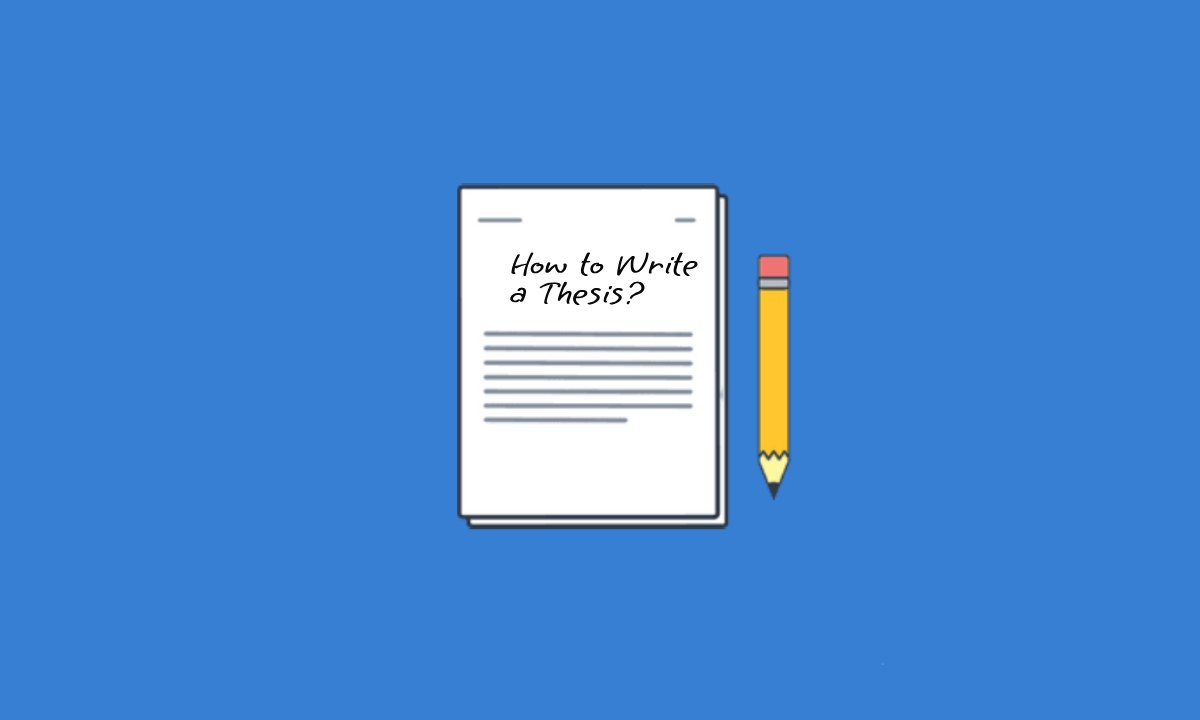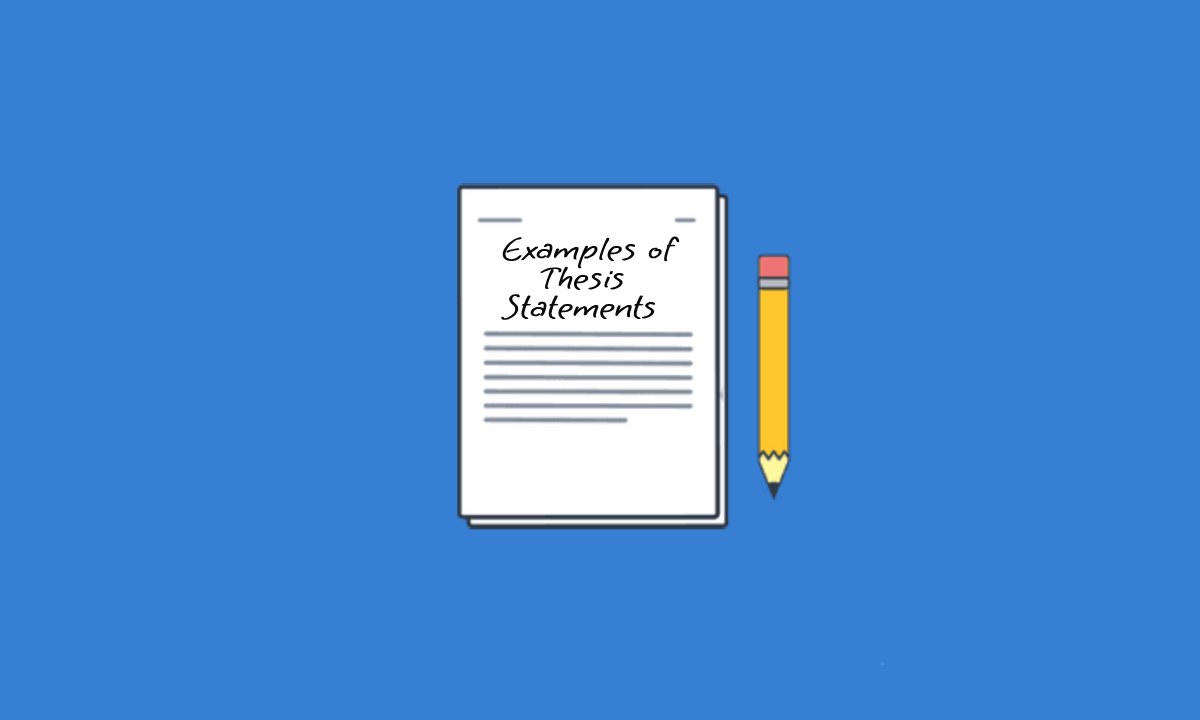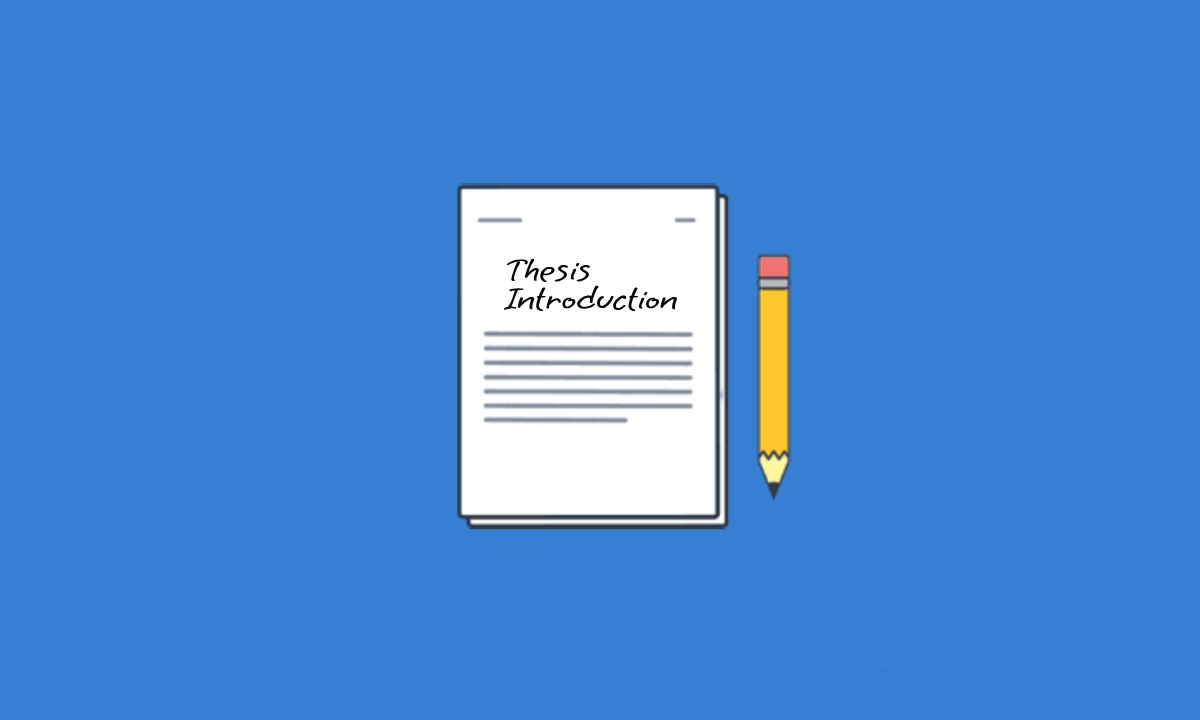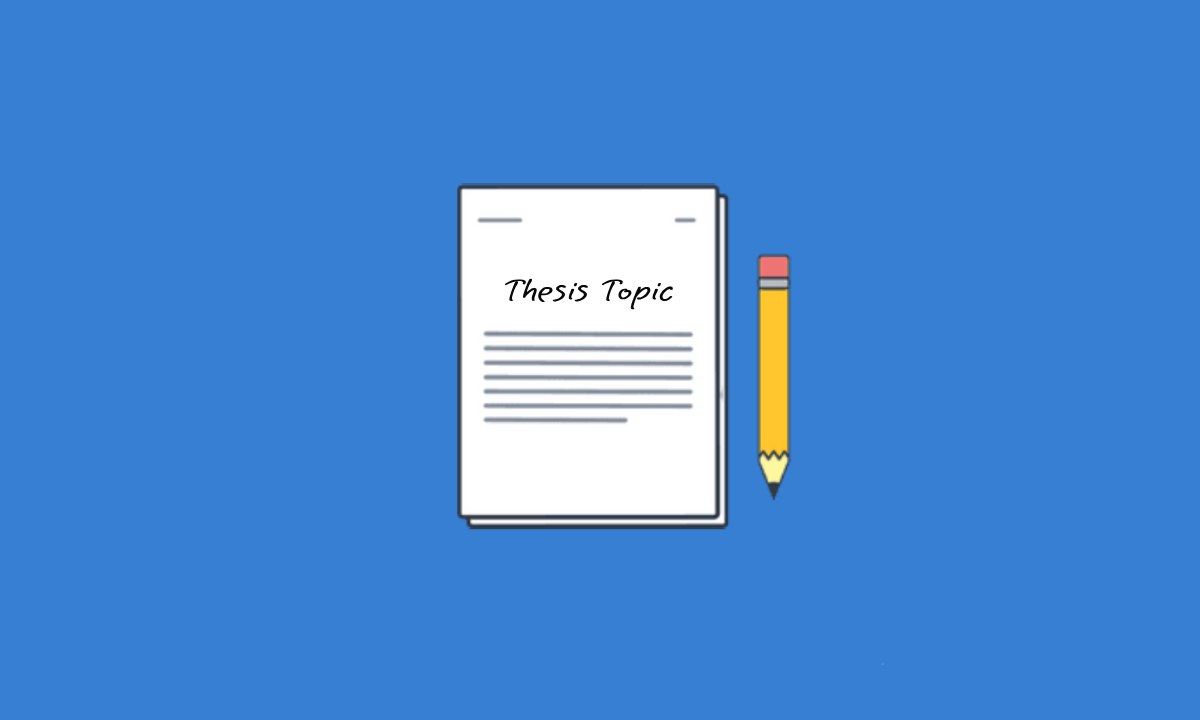- Privacy Policy

Home » Thesis – Outline, Structure and Writing Guide

Thesis – Outline, Structure and Writing Guide
- Table of Contents

A thesis is a substantial research document submitted as part of a degree program, typically at the master’s or doctoral level. It presents original research findings, explores a specific topic in depth, and contributes to the academic field. Writing a thesis requires thorough planning, a clear structure, and a methodical approach to present arguments and evidence effectively.
This guide explains the outline, structure, and step-by-step process for writing a thesis, offering tips to ensure academic success.
Thesis Outline
A thesis outline serves as a roadmap for organizing ideas, arguments, and evidence logically. It ensures consistency and coherence throughout the document. Below is a general outline for a thesis:
- Title of the thesis.
- Author’s name.
- Institutional affiliation.
- Submission date.
- A concise summary of the research, including objectives, methods, key findings, and conclusions.
- Express gratitude to individuals or organizations that supported the research.
- List of headings and subheadings with corresponding page numbers.
- Include all visual elements like charts, graphs, and tables with page numbers.
- Background of the study.
- Research problem or question.
- Objectives or hypotheses.
- Significance of the research.
- Overview of relevant theories and previous research.
- Identification of research gaps.
- Research design.
- Data collection and analysis methods.
- Ethical considerations.
- Presentation of data and key findings.
- Interpretation of findings.
- Comparison with existing literature.
- Implications of the study.
- Summary of findings.
- Limitations of the research.
- Recommendations for future studies.
- A complete list of all sources cited in the thesis.
- Supplementary material such as survey instruments, raw data, or detailed calculations.
Thesis Structure
1. title page.
The title page includes essential details about the thesis, such as the title, author’s name, program, supervisor, and submission date. Ensure compliance with your institution’s formatting guidelines.
2. Abstract
An abstract is a brief overview of the entire thesis, typically 150–300 words. It provides readers with a summary of the research question, methods, results, and significance.
3. Acknowledgments
Acknowledgments allow you to thank supervisors, colleagues, funding agencies, and others who contributed to your work.
4. Introduction
The introduction sets the stage for the research by explaining:
- Background: Contextualize the research topic.
- Research Problem: Define the problem your study addresses.
- Objectives: State what the research aims to achieve.
- Scope: Outline the boundaries of the research.
- Significance: Highlight the importance of the research for the academic field or practical applications.
5. Literature Review
This section provides a critical analysis of existing research related to the topic. It:
- Discusses key theories and studies.
- Identifies gaps or unresolved issues.
- Justifies the need for the current research.
6. Methodology
The methodology explains how the research was conducted, including:
- Design: Whether the study is qualitative, quantitative, or mixed-methods.
- Participants: Description of the sample or population.
- Data Collection: Methods used (e.g., surveys, interviews, experiments).
- Analysis: Techniques for analyzing data (e.g., statistical tests, thematic analysis).
This section presents the findings without interpretation. Use tables, charts, and graphs to display data clearly.
8. Discussion
The discussion interprets the findings in relation to the research questions and existing literature. Address:
- Patterns or Trends: Highlight significant results.
- Implications: Discuss how the findings contribute to theory or practice.
- Limitations: Acknowledge constraints or challenges faced.
9. Conclusion
Summarize the research, emphasizing its contributions and the significance of the findings. Suggest areas for future research.
10. References
List all sources cited, formatted according to the required citation style (e.g., APA, MLA, Chicago).
11. Appendices
Include supplementary material that supports the main text but is too detailed for inclusion in the main body.
Writing Guide for a Thesis
Step 1: choose a research topic.
- Select a topic that aligns with your interests and academic goals.
- Ensure the topic is specific, relevant, and feasible.
Step 2: Conduct a Literature Review
- Review existing studies to understand the research landscape.
- Identify gaps or unresolved questions.
Step 3: Define Research Objectives and Questions
- Clearly articulate what the study aims to achieve.
- Develop specific and measurable research questions or hypotheses.
Step 4: Develop a Research Plan
- Choose an appropriate methodology.
- Outline data collection and analysis procedures.
- Seek ethical approval if required.
Step 5: Draft the Thesis Outline
- Create a detailed outline based on the sections and sub-sections described earlier.
Step 6: Write the Thesis
- Start with the Introduction , providing context and stating the research objectives.
- Expand the Literature Review to critically discuss prior studies.
- Describe the Methodology with sufficient detail for replication.
- Present Results clearly using visual aids as needed.
- Interpret the results in the Discussion , relating them to the research objectives.
- Conclude the thesis by summarizing key findings and suggesting future directions.
Step 7: Edit and Revise
- Review the thesis for clarity, coherence, and accuracy.
- Ensure adherence to formatting and citation guidelines.
Step 8: Submit and Defend
- Submit the completed thesis for review.
- Prepare for the oral defense by anticipating questions and rehearsing answers.
Tips for Writing a Thesis
- Start Early: Allocate sufficient time for research, writing, and revisions.
- Stay Organized: Use tools like reference managers (e.g., Zotero, Mendeley) and project management apps.
- Seek Feedback: Share drafts with your advisor or peers for constructive feedback.
- Follow Guidelines: Adhere to institutional formatting and submission requirements.
- Stay Focused: Avoid tangential information that does not contribute to your research objectives.
Common Challenges and How to Overcome Them
- Procrastination: Set daily writing goals and deadlines to stay on track.
- Writer’s Block: Break tasks into smaller, manageable sections to build momentum.
- Data Overload: Focus on key findings that directly address the research questions.
- Time Management: Use a detailed timeline to balance research, writing, and personal commitments.
Example of a Thesis Outline
Title: The Impact of Social Media on Adolescent Mental Health
- Acknowledgments
- Background of Social Media Use
- Research Problem and Objectives
- Theories of Media Influence
- Existing Research on Adolescents and Mental Health
- Research Design (Quantitative Survey)
- Sample (High School Students)
- Data Collection Tools (Online Questionnaire)
- Statistical Analysis of Anxiety Levels and Screen Time
- Patterns of Social Media Usage
- Interpretation of Findings
- Implications for Education and Policy
- Study Limitations
A thesis represents a culmination of academic research and intellectual effort, showcasing a student’s ability to contribute to their field. By adhering to a clear outline, well-structured format, and methodical writing process, students can create a compelling and impactful thesis. With proper planning, time management, and attention to detail, writing a thesis becomes an achievable and rewarding academic milestone.
- Creswell, J. W. (2018). Research Design: Qualitative, Quantitative, and Mixed Methods Approaches . Sage Publications.
- Murray, R. (2011). How to Write a Thesis . Open University Press.
- Swales, J. M., & Feak, C. B. (2012). Academic Writing for Graduate Students . University of Michigan Press.
- American Psychological Association. (2020). Publication Manual of the American Psychological Association (7th ed.).
- Mauch, J. E., & Birch, J. W. (2010). Guide to the Successful Thesis and Dissertation . CRC Press.
About the author

Muhammad Hassan
Researcher, Academic Writer, Web developer
You may also like

What is a Hypothesis – Types, Examples and...

Research Methods – Types, Examples and Guide

Research Paper Conclusion – Writing Guide and...

Figures in Research Paper – Examples and Guide

Research Approach – Types Methods and Examples

Scope of the Research – Writing Guide and...
How to Write a Thesis – Step by Step Guide

Writing a thesis can seem daunting, but breaking it down into manageable steps can make the process much more manageable. A thesis represents more than just a culmination of your academic knowledge—it’s an opportunity to contribute original insights to your field of study, to engage deeply with existing scholarship, and to showcase your ability to think critically and independently. In this comprehensive guide, we will navigate the intricate path of thesis writing, offering step-by-step instructions, practical tips, and invaluable insights to help you navigate this academic milestone with confidence and proficiency.
Table of Contents
Steps to Write Thesis:
Step 1: choose your topic.
To initiate the thesis writing process, start by brainstorming ideas that align with your interests, prior coursework , and current trends within your field of study. Once you have a pool of potential topics, narrow down your options to a specific subject that is both feasible and relevant to your academic pursuits. Ensure that there is substantial existing literature to support your chosen topic, as this will provide a foundation for your research endeavors. Here is a guide on How to Choose a Thesis Topic?
Step 2: Define Your Research Question
After selecting your topic, the next crucial step is to formulate a clear and concise research question or thesis statement . This statement should succinctly outline the purpose and scope of your study, serving as a guiding principle throughout the research process. Additionally, identify specific objectives that break down your thesis statement into measurable components. Consider the significance of your research question within the broader context of your field and articulate why your study is relevant and valuable.
Step 3: Develop a Research Plan
With your research question in place, develop a comprehensive research plan that outlines the methodologies and strategies you will employ to address your objectives. Choose appropriate research methods, whether qualitative, quantitative, or mixed, that align with your research question and objectives. Design data collection tools such as surveys, interview guides, or experimental protocols, ensuring that they are tailored to your chosen methodologies. It’s also essential to consider ethical considerations, obtaining necessary approvals and ensuring that your research design upholds ethical standards.
Step 4: Conduct Literature Review
Conduct a thorough literature review to familiarize yourself with existing research relevant to your topic. Utilize academic databases, libraries, and online resources to gather a diverse range of scholarly sources. Analyze and evaluate each source for credibility, relevance, and significance to your research question. Synthesize the findings from your literature review, identifying common themes, gaps, and contradictions within the existing body of knowledge.
Step 5: Collect Data
Implement your research methods according to your established plan, whether through surveys, interviews, experiments, or observations. Record your data systematically, ensuring accuracy and consistency in your data collection process. Consider triangulating your data by utilizing multiple sources or methods to enhance the validity and reliability of your findings.
Step 6: Analyze Data
Once you have collected your data, organize and analyze it using appropriate tools and techniques. If you are working with quantitative data, apply statistical analysis methods relevant to your research question. Interpret your findings by identifying patterns, trends, and relationships within your data, drawing meaningful conclusions that address your research objectives.
Step 7: Write the Thesis
Outline your thesis structure, including sections such as the introduction , literature review, methodology, results, discussion, and conclusion. Begin writing each section, starting with the areas you feel most comfortable with and revising as you progress. Maintain consistency and coherence throughout your thesis, using transitions to connect ideas and ensure a logical flow between sections. Properly cite your sources according to the citation style specified by your institution, and seek feedback from peers or advisors as you draft and refine your thesis. Here is a guide on commonly used thesis structure IMRAD .
Step 8: Revise and Edit
Review your thesis for content, clarity, and coherence, ensuring that your arguments and analysis are well-developed and supported by evidence. Edit your writing for style, grammar, punctuation, and spelling errors, polishing your prose for clarity and readability. Check your formatting to ensure compliance with the guidelines provided by your institution, and make any necessary revisions based on feedback received from peers or advisors.
Step 9: Finalize and Submit
Incorporate any final revisions based on feedback and conduct a thorough proofreading to catch any remaining errors. Once you are satisfied with the quality of your thesis, follow the submission guidelines provided by your department or university to submit your final document. Ensure that all required documentation and paperwork are completed accurately and submitted by the specified deadline.
Step 10: Defend Your Thesis (if required)
If your program requires a thesis defense , prepare a comprehensive presentation summarizing your research findings, methodology, and conclusions. Anticipate potential questions from your thesis committee or examiners and prepare thoughtful responses. Approach your defense with confidence, presenting your research with clarity and professionalism, and engaging in constructive dialogue with your audience.
Tips to Write a Good Thesis:
Choose a Relevant and Interesting Topic: Select a topic that aligns with your interests, expertise, and career goals. Ensure that it is also relevant to your field of study and has the potential to contribute new insights or address existing gaps in knowledge.
Narrow Down Your Focus: Refine your research question to ensure that it is specific and manageable. Avoid overly broad topics that may be difficult to address comprehensively within the scope of your thesis.
Conduct Thorough Research: Take the time to gather a diverse range of sources, including academic journals, books, and reputable websites. Engage critically with existing literature to develop a solid understanding of the subject matter and identify key debates or areas for further exploration.
Create a Clear Thesis Statement: Craft a concise and arguable thesis statement that articulates the main argument or central claim of your thesis. Your thesis statement should provide a roadmap for your research and guide the structure of your paper.
Develop a Logical Structure: Organize your thesis into coherent sections, such as introduction, literature review, methodology, results, discussion, and conclusion. Ensure that each section flows logically and contributes to the overall coherence and persuasiveness of your argument.
Use Evidence to Support Your Claims: Support your arguments with empirical evidence, data, and examples drawn from your research. Be sure to critically evaluate the quality and relevance of the evidence you use to ensure its credibility and reliability.
Engage with Counterarguments: Acknowledge and address counterarguments or alternative perspectives within your thesis. Demonstrating an awareness of opposing viewpoints can strengthen your argument and demonstrate your ability to think critically and analytically.
Write Clearly and Concisely: Strive for clarity and precision in your writing, avoiding unnecessary jargon or overly complex language. Use clear and straightforward prose to communicate your ideas effectively to your readers.
Revise and Edit: Take the time to revise and edit your thesis carefully, paying attention to both content and style. Check for logical coherence, clarity of expression, grammatical accuracy, and adherence to formatting guidelines.
Seek Feedback: Don’t hesitate to seek feedback from your advisor, peers, or other trusted mentors throughout the writing process. Constructive feedback can help you identify areas for improvement and refine your argument and writing style.
Stay Organized and Manage Your Time Effectively: Break down the writing process into manageable tasks and set realistic deadlines for each stage of your thesis. Stay organized by keeping track of your research notes, drafts, and references to ensure that you stay on track and meet your deadlines.
Take Care of Your Well-being: Writing a thesis can be a demanding and stressful process, so it’s essential to prioritize self-care and maintain a healthy work-life balance. Take regular breaks, get plenty of rest, and seek support from friends, family, or counseling services if needed.
By following these tips and staying focused and disciplined, you can write a strong and compelling thesis that demonstrates your expertise, critical thinking skills, and scholarly contribution to your field of study.
Related Posts

20+ Examples of Thesis Statements

Thesis Introduction: Definition, Length, Examples & How-to Guide

Thesis Topic: Definition, Factors, How-to & Examples

IMAGES
VIDEO